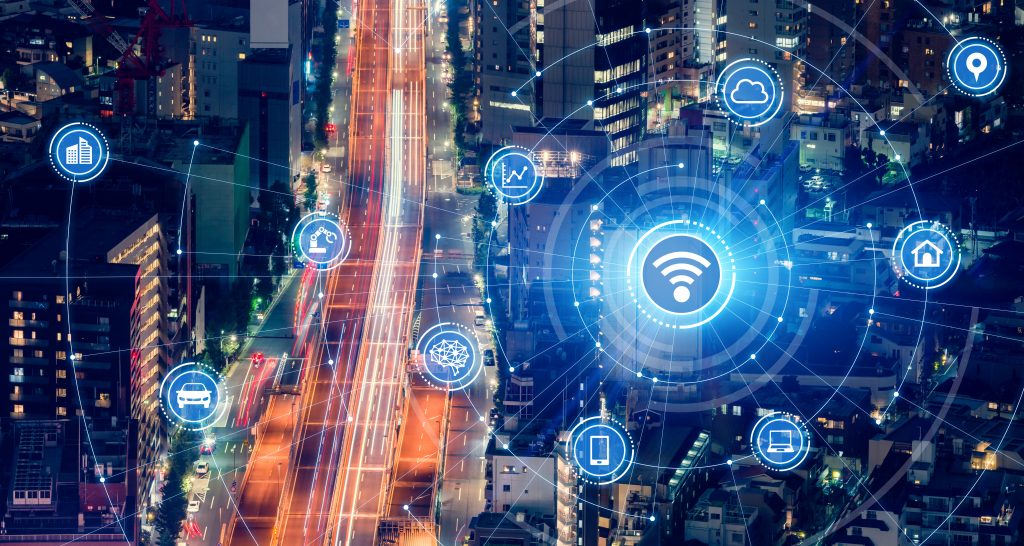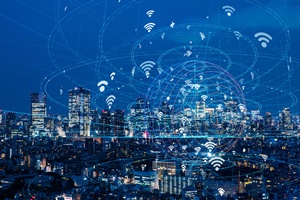The internet of things (IoT) is continuing to revolutionise the way industries operate. Businesses are increasing their spending on IoT technology to drive growth, with the technology being used by organisations for the creation of new use cases, products and services, and to overhaul their business models and help them enter new markets, says Michel Savoie, partner, technology consulting, EY.
In this article, we will look at how revenue growth is a key factor for businesses investing in IoT technology. We will also explore how interest is growing in use cases that support remote working, virtual reality (VR), augmented reality (AR) and sustainability, and how IoT is increasingly viewed by enterprises as a way of helping companies meet their sustainability goals.
Revenue growth key for firms investing in IoT
Improving operational efficiency was once the most important factor for companies when it came to investing in IoT, but this has recently been overtaken by IoT’s potential to drive revenue growth.
For example, by leveraging IoT devices and sensors, businesses can collect vast amounts of data in real-time, enabling them to gain valuable insights and make data-driven decisions. IoT sensors can be embedded in products to gather data on their usage, performance, and maintenance needs.
This data can be used to optimise operations, improve efficiency, enhance customer experiences, and develop new revenue streams. The technology can enable businesses to offer product-as-a-service models, where customers pay for the use of a product rather than owning it outright. This shift from ownership to usage-based models enables organisations to generate recurring revenue and develop long-term customer relationships.
Firms can also monetise the data they secure by analysing and extracting meaningful information from it. By offering data-driven services, such as predictive maintenance, personalised recommendations, or remote monitoring, businesses can create new revenue streams and provide value-added services to their customers.
Recent advancements in artificial intelligence (AI) will also be an accelerator to help companies achieve this. AI systems can allow businesses to unlock the full potential of the vast amounts of data they collect through IoT devices, particularly through predictive analytics for example and leveraging the insights generated from the analysis of IoT data.
Alongside this, by integrating sensors and connectivity, companies can offer enhanced functionalities, and provide personalised experiences. This opens new opportunities for product innovation and differentiation, allowing firms to command premium prices and capture new market segments.
With the IoT, businesses can tap into untapped market opportunities, create innovative products and services, and gain a competitive edge in their respective industries.
Interest is growing in supporting different use cases
Enterprises are alive to a wide range of opportunities unlocked by 5G-based IoT. A particularly noticeable trend in the past year is the sharp uptick in the importance attached by firms to remote working, virtual reality, augmented reality, and sustainability – all seen as markedly more significant areas for IoT application areas than in previous years.

The adoption of hybrid working practices, for some businesses, has made IoT technologies more relevant than ever. IoT-enabled devices and applications facilitate seamless communication, collaboration, and monitoring for remote workers. From smart home offices with connected devices to remote asset management in industrial settings, the IoT enables businesses to create a secure and productive remote working environment.
In addition, the IoT is transforming the landscape of VR and AR technologies. IoT devices can provide real-time data and inputs to enhance the immersive experience of VR and AR applications.
For instance, in manufacturing, IoT sensors can collect data from physical objects, which can be visualised in AR overlays for technicians, aiding in maintenance, troubleshooting, and training. This convergence of IoT, VR, and AR creates new avenues for businesses to improve training, design, and visualisation processes, leading to increased productivity and efficiency.
It is important to note that security within IoT has been a concern. However, the recent focus on industry regulation and standards ensuring security by design for IoT products is improving organisations’ confidence in exploring more IoT use cases.
IoT is helping businesses with their sustainability goals
Sustainability is another crucial area where the IoT is gaining traction among enterprises. Most businesses today believe emerging technologies play a vital role in accelerating their green objectives. Key benefits include greater energy efficiency, improved measurement of carbon emissions, and the enablement of more virtual products and processes.
IoT devices and sensors can be deployed to monitor and optimise energy consumption, reduce waste, and enhance resource efficiency. For example, smart buildings equipped with IoT-enabled systems can automatically adjust lighting and temperature based on occupancy, reducing energy consumption and minimising the company’s carbon footprint.
Similarly, IoT-based supply chain monitoring can optimise logistics, minimise product spoilage, and reduce greenhouse gas emissions. By integrating IoT into their operations, businesses can drive sustainability initiatives, improve environmental performance, and contribute to a more sustainable future.
Other perceived benefits include the positive impact on circular business models and the transition to renewable energy sources. Traditional linear business models follow a “take-make-dispose” approach, which results in resource depletion and waste generation. However, with IoT integration, businesses can implement circular practices that focus on reducing waste, reusing materials, and extending product lifecycles.
In addition, IoT technologies have the potential to play a crucial role in the integration of renewable energy. IoT-enabled devices can monitor energy consumption patterns, production efficiency, and grid dynamics, providing businesses with real-time insights into their energy usage.
These insights can enable organisations to identify opportunities for energy conservation, optimise energy generation and storage, and integrate renewable energy sources effectively. By leveraging IoT in energy management, businesses can reduce their dependence on non-renewable energy, minimise their carbon footprint, and contribute to the global transition toward a clean energy future.

A key technology for businesses
Overall, the IoT is emerging as a key technology for businesses, providing them with transformative capabilities and opportunities. The EY Reimagining Industry Futures Study 2023 highlights the pivotal role of IoT in driving revenue growth, and supporting a company’s efforts across its remote working, VR, AR, and sustainability policies.
The adoption of IoT technologies is set to increase across industries as enterprises recognise its potential to enhance operational efficiency, improve customer experiences, and achieve sustainability goals. Embracing the IoT revolution will enable businesses to stay competitive, innovate, and thrive in the ever-evolving digital landscape.
The author is Michel Savoie, partner, technology consulting, EY.
Comment on this article below or via Twitter: @IoTNow_OR @jcIoTnow










